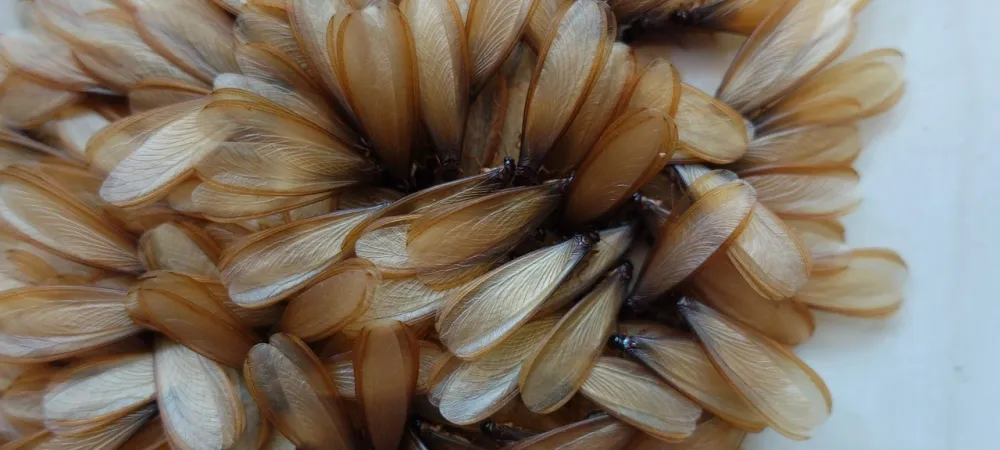Do Termites Fly?

If you’ve ever seen a swarm of winged insects suddenly appear around your windows, doors, or lights, you may have asked yourself: do termites fly? The short answer is yes, some termites can fly, but only for a brief period during a specific stage in their life cycle.
In this blog, we’ll explain what flying termites are, how they differ from flying ants, why you might suddenly see them, and how to get rid of them before they cause serious damage.
Yes, Termites Can Fly—But Only Some of Them
Flying termites, also known as “alates” or swarmers, are the reproductive members of a termite colony. Unlike worker or soldier termites, which stay hidden in wood or soil, these winged termites leave the nest in large groups to mate and establish new colonies. This swarming event usually happens once a year, often after a warm rain in spring or early summer.
These swarmers are a major red flag. While they don’t cause damage themselves, they signal that a mature termite colony is nearby, potentially one that’s already infesting your home or property.
Why Do Flying Termites Suddenly Appear?
Flying termites seem to show up out of nowhere, but their sudden appearance is tied to weather, moisture, and maturity of the colony. Here are the main triggers:
- Swarming Season: Most termite species swarm when temperatures rise and humidity is high, often in spring or early summer.
- Warm Rainfall: A rainstorm followed by warm, still air often kicks off a swarm.
- Colony Maturity: A termite colony typically needs 3–5 years to mature enough to produce swarmers.
If flying termites are emerging inside your home, that likely means you already have a termite infestation, and it’s time to act quickly.
Flying Ants vs. Termites: How to Tell Them Apart
At a glance, flying ants and termites can look almost identical, but there are a few easy ways to spot the difference:
- Body shape: Termites have a straight, uniform body, while flying ants have a more defined “waist” that makes their body look pinched in the middle.
- Wings: Termites have two pairs of wings that are all the same size. Flying ants have larger wings in front and smaller ones in back.
- Antennae: Termite antennae are straight, while ant antennae bend like a small elbow.
- Wings falling off: Termite wings often fall off easily—you might find piles of wings on windowsills or near light sources. Ants usually keep their wings longer.
If you're still not sure, it’s worth reaching out to a pest control expert. Even a small swarm could mean there’s a bigger problem hidden behind the walls.
How to Get Rid of Flying Termites
Seeing flying termites means you’re either witnessing the start of a new infestation or spotting the signs of an existing one. Here’s what to do next:
1. Don’t Panic—But Don’t Ignore It
Swarmers don’t bite or sting, and they don’t cause structural damage. But their presence is a warning that a termite colony is active nearby.
2. Look for Other Signs of Infestation
Check for:
- Discarded wings near windows or doorways.
- Mud tubes on walls or foundations.
- Hollow-sounding wood or blistering paint.
- Small holes in drywall or baseboards.
3. Seal Entry Points
Close gaps around windows, doors, and foundations to prevent future swarmers from entering.
4. Reduce Moisture
Fix leaks and improve ventilation. Termites are drawn to moist environments.
5. Schedule a Professional Termite Inspection
DIY sprays or traps won’t stop an established colony. The most effective way to eliminate termites is to hire a licensed pest control company like the team here at Rudy’s Exterminating Co., Inc. that can identify the species and apply the right treatment for your infestation.
